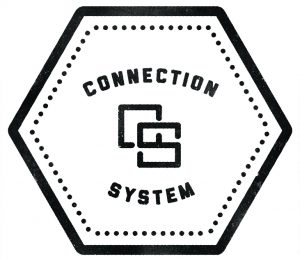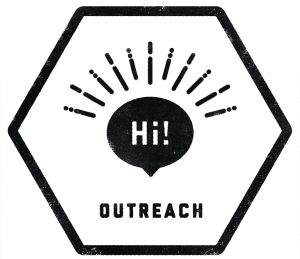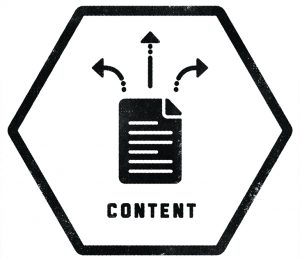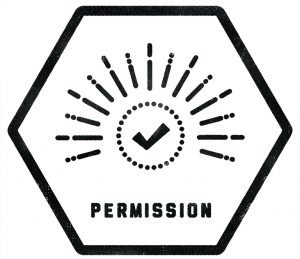Let’s face it. The old way of publishing is dead.
Just two days ago I spoke to an author that got picked up by the publishing house of her dreams, paid a $15,000 advance, and then… nothing.
Once the book was out, she was on her own.
The dream of getting a publishing deal and sitting back while your publisher takes care of making you a bestseller is dead.
If you want to be a successful author — no matter if you’re self-published or traditionally published — you have to make it happen yourself.
So how do you do that?
Where do you even begin?

What is an author platform?
If you ask six different writers to define “author platform,” you will probably get six different answers.
One might say that it is their website. Another might say it’s their social media presence. It could be that they travel around and speak sixty times a year.
If you ever sit down with a publisher that is interested in acquiring your book, they are going to ask about your author platform.
Here’s the thing… “author platform” is just code.
When you get asked about your author platform, here’s what they are really asking:
“How are you going to sell your book when it comes out?”
Your author platform is however you plan to sell your books.
Whether it’s speaking all over the world, a big email list of your fans, or standing in Times Square and New York City and hand-selling your books… your author platform is how you are going to sell books.
In fact, here’s my definition of an Author Platform:
“A direct connection to your audience that allows you to predictably and reliably sell books.”
In order to break-in and succeed in today’s book industry, you must have an author platform.
Let’s break it down a little bit:
“direct connection”
Do you own the connection to your fans?
Or are you relying on a publicist to help you?
Your publisher’s publicist is overworked and sending your book to the same list of bloggers, editors, and producers they send every book to.
If you hire your own publicist, they’re going to put you on an expensive monthly retainer so you pay them every month for their best try, whether they get you any coverage or not. And it’s getting harder and harder to get new coverage.
However, if you are directly connected to your audience, you don’t need anyone to help you find new people. You just talk directly to your fans.
“your audience”
The key here is to find and connect to people that are likely to be interested in your book.
If you write romance, your audience is people that read romance novels.
If you write spiritual self-help, your audience is people that are interested in their spiritual well being.
You want a direct connection to a group of people that are interested in the type of books you write.
“predictably and reliably sell books”
When you publish a new book, you have 3 options:
- Publish and hope. Put your book out and hope that it some how, some way, finds an audience and sells.
- Publish and pay. Spend a ton of money on advertising and publicists in hopes that it sells enough copies to make your money back.
- Publish and know. Since you already have a direct connection to your audience, you know that your book is going to sell on the first day it’s published.
The Goal: Build an Author Platform
This is how authors are winning in today’s publishing marketplace. They have built up an author platform so they have a direct connection to their audience so when they publish a new book they know it will sell.
The next question: how?
How do you build an author platform?
Book marketing can be a huge, disastrously overwhelming topic that includes conversations about Twitter and Instagram and Facebook pages and blogs and podcasts and ads and a hundred other things. In this article, I will help you simplify and organize your plans by teaching you the basics of book marketing with the Connection System.
I’ve been working with authors for over a decade to help them build their platforms, connect with readers, and sell more books. I’ve worked one-on-one with hundreds of authors including New York Times and Wall Street Journal bestsellers like Hugh Howey, Daniel Pink, Barbara Corcoran, Sally Hogshead, Chip and Dan Heath, Robb Wolf, Charles Duhigg, Jean Chatzky, and many many more. I’ve worked across all genres — fiction and non-fiction —, publishers — traditional and indie —, and authors — big bestsellers to just-getting-started.
The advice I give is always based on real-world experience that I have tested across many different authors and platforms. My goal is only to give advice that I know will work for you because I’ve gone out and tried it for myself with my platform and my client’s.
The best way I’ve found to build an author platform is through the Connection System.
The Connection System: How to Build an Author Platform

As I worked with author after author and studied the authors that were finding success, I started to see a pattern.
I found an overarching system that every successful author was using to get predictable results of book sales. And it could all be boiled down to three simple principles.
So whether the author was active on social media or not, or had a blog or didn’t, or did a ton of speaking or not, or showed up on national media or not, or traditionally published or not… that didn’t matter.
What I saw over and over was they had something working in each of these three categories:
- Outreach: The act of moving people from not knowing you exist to knowing you exist.
- Content: Providing a way for people to get to know you and your writing.
- Permission: A way to stay in contact with people long-term.
This is the Connection System.
What I saw was that if an author was able to solve these three problems, they were able to build a platform that predictably sold books.
Let’s look at each one in more detail:
1. Outreach
The act of moving people from not knowing you exist to knowing you exist.

Your first problem as an author is that enough people don’t know you or your books even exist. How are they supposed to buy something that they don’t know exists?
The first problem you have to solve when you are marketing is how to move people from not knowing you exist, to knowing you exist.
You can do this in literally thousands of ways. Here are a few:
- Be a guest on a nationally televised program.
- Speak at a conference.
- Get interviewed on a podcast.
- Get your book reviewed in the New York Times.
- Have a popular blogger write an extensive post about you.
- Speak at book clubs.
- Post a lot on Reddit.
- Stand on the street in Times Square, New York with a bunch of business cards introducing yourself to random people.
Literally, anything you do that moves people from not knowing you exist to knowing you exist is Outreach. Of course, there are ways to do this that are more effective than others, but right now that is not the point. Unless you have a plan for how you are going to accomplish Outreach, you will never build a successful author platform.
2. Content
Providing a way for people to get to know you and your writing.

Every time I’m looking for a new book to read, I download a sample of it to my Kindle. This gives me a chance to try out the author’s content to see if it’s a good fit for me.
When I listen to a podcast and an author is being interviewed, if I like what she has to say, I often go to her website or check out her new book.
Content is the second step in the Connection System and is how people get to know you and your books and see if you’re a good fit for them. Of course, not everyone — not even most people — will like your work, but that’s ok. Content is how you find your audience.
Your goal is to put out content widely and freely in different channels so people have an opportunity to connect with your work and decide if it’s right for them.
This can also take literally thousands of different forms. Here’s a few:
- Start a blog and post regularly.
- Start a podcast and release episodes regularly.
- Publish new research and studies in your field.
- Release a novella based in your novel’s world.
- Start a YouTube channel and release new episodes regularly.
The goal here is to put out content in as many different places as possible so your audience can find it and connect with you.
Note: Outreach and Content often work hand-in-hand in the Connection System. Getting interviewed on a podcast is both introducing you to people that have never heard of you before and providing content. Getting an author friend to send your free novella to their email list is moving his fans from not knowing you exist to knowing you exist while giving them Content to connect with. Same with YouTube or getting your work published in a professional journal.
3. Permission
A way to stay in contact with people long-term.

Remember that the first step in my definition of marketing is “create long-lasting connections with people.”
If you work really hard to get Outreach opportunities and people enjoy your Content, that’s great. But it does not create a long-lasting connection. Sure, maybe they buy a copy of your book after hearing you on that radio show, but then what? What about your next book?
The problem with relying on Outreach alone to launch a new book is that every time you release a new book you have to do all the same work again to find people to buy your book. You’re starting at zero every time.
That’s not marketing. That’s publicity. Publicity is constantly running around trying to drum up interest in something. Publicity is hard, getting harder, and has a quick rate of diminishing returns.
Marketing is creating long-lasting connections.
You move from Publicity to Marketing when you have Permission.
Permission is what you build when, once you have a connection to someone, you can continue to communicate with them long into the future.
Permission, the third step in the Connection System, is measured by how reliably and predictably you can
- Get people’s attention, and
- Drive action.
In Outreach and Content, I said there are thousands of ways to do those effectively.
In Permission, there is only one extremely effective action:
Build an email list.
Of all the tools out there that allow people to connect with you long-term — Twitter, Facebook, Instagram, Pinterest, Podcasts, Blogs, YouTube channels, etc. — there is only one that has the greatest effect on 1) getting people’s attention and 2) driving action… Email.
I’ve talked extensively about myths of social media marketing for authors and why email marketing is so important.
If John randomly hears you on a podcast and buys a copy of your book, how reliably can you get John’s attention and get him to buy a copy of your next book two years from now? I’d say that number is close to zero.
However, if I get John to join my email list, I’ll be able to sell him a copy of my current book, and then the book I come out with two years from now, and then all my other titles in the future.
The Connection System
If you line up the three parts of the Connection System, you’ll see they work together very well.
Outreach moves people from not knowing you exist to knowing you exist. Now that people know who you are, they engage with your Content so they can see if you’re a good fit for them. Then, you create a long-term connection with them by getting Permission to stay in contact with them long-term by joining your email list.
Every. Single. Author. Has to solve all three of these problems in order to be successful.
Here are a couple of examples…
Hugh Howey, New York Times bestselling author of Wool, started by blogging on his website (Content) and self-publishing his books on Amazon. He was always quick to help anyone that reached out to him (Outreach) and started going to conferences and workshops in the writing world (Outreach). As more people started finding his books, his serialized novel Wool started gaining traction. People began following his blog (Permission), connecting with him on social media (Permission), and signing up for his email list (Permission).
Now, after doing this for years, he has a solid platform with thousands of connections to readers so when he comes out with a new book he can immediately connect with his audience and let them know that it’s available.
Stephen King is, well, Stephen King. He has written sixty books and sold hundreds of millions of copies of his books. He’s been publishing his writing for 50 years (Content), and the success of his writing has made him famous (Outreach). Now, when he comes out with a new book, he doesn’t have an email list, but every bookstore in every town and airport prominently displays his book on the front tables of their store (Permission).
Yes, even the most famous, prolific writers have to solve all three problems in the Connection System!
What’s next?
In this article I gave you a look at book marketing from a higher level. It’s not about figuring out the perfect time of day to post on Twitter or the right word count for your next blog post.
Your goal is to create long-lasting connections with people and then be relentlessly helpful. The way you do that is by creating a reliable system that helps you solve three problems: Outreach, Content, and Permission.
Everything you do should be trying to solve one of those three problems. If you find yourself debating in your mind about the icon to choose for you new Facebook Group, you’ve lost sight of the overarching picture.
Build your Connection System. Spend your time solving the three problems in the Connection System, and you will build a successful author platform that reliably and predictably sells books.
Leave a Reply